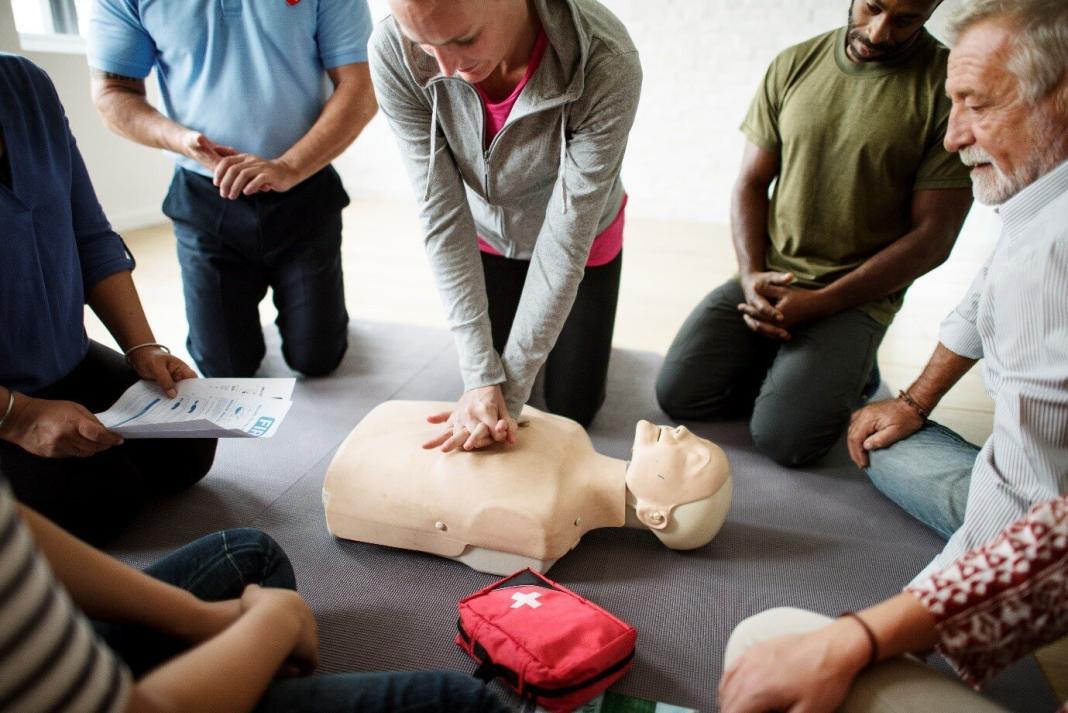Introduction: The Importance of First Aid Courses
First aid refers to the immediate assistance given to any person suffering a sudden illness or injury, with care provided to preserve life, prevent the condition from worsening, and promote recovery. It is a practical skill that everyone should possess. In case of an emergency, an individual with first aid training can step in to provide necessary help until professional medical aid arrives.
Not only are these skills crucial for those who are directly impacted, but they have a remarkable effect on the broader community. Living in a society where first aid knowledge is widespread and commonplace, communities are safer, more resilient, and empowered. A first response can be the difference between life and death, a full or partial recovery, or a temporary or permanent disability.
Moreover, the sharing of first aid course knowledge can eliminate fear and anxiety. It gives individuals the confidence to step forward when help is needed, hence promoting a cohesive, empowered, and caring community. Thus, having community members trained in first aid does not only benefit the individual but the broader society.
The Role of First Aid Courses in Personal Growth
First aid courses are not only about learning medical terms or procedures but also play a substantial part in personal growth and character development. First and foremost, these courses instill a sense of responsibility in people. By knowing how to react in dire situations, individuals understand the implications of their actions and inactions, thus fostering a sense of responsibility for the well-being of others.
Furthermore, first aid courses create a sense of confidence during emergencies. Armed with the correct knowledge and skills, individuals can take prompt action rather than freezing or panicking in emergencies. This confidence can also transfer to everyday life, fostering a mindset of readiness and proactiveness.
Moreover, these courses cultivate problem-solving skills. As unexpected complications can arise in emergency situations, individuals must think on their feet and make informed decisions quickly. Thus, first aid training can greatly enhance problem-solving and decision-making skills, both in critical situations and in everyday life.
First Aid Courses and Community Resilience
First aid skills can significantly contribute to community resilience. Such communities are more prepared to face emergencies and recover from them effectively. These skills create a sense of empowerment among community members, as they are equipped with the tools to help protect one another.
Furthermore, there are countless real-life stories of ‘first aid heroes’ who have used their training to save lives. For instance, a middle-aged woman in Melbourne used her CPR skills to save a stranger who collapsed in a shopping center. A teenager in Sydney performed the Heimlich maneuver to save his choking friend. These instances showcase how first-aid-trained individuals have the potential to significantly change their communities, one action at a time.
First Aid Courses Demystified: Breaking Down the Learning Curve
First aid courses are designed to be comprehensive yet approachable, providing necessary life-saving knowledge without overwhelming learners. The courses typically cover a range of topics like performing CPR, tackling choking emergencies, handling burns, and fractures, and more. The objective is to equip individuals with a broad spectrum of skills applicable to different situations.
Moreover, first aid courses aren’t just lectures; they involve practical sessions where participants deal with real-life scenarios. This is an excellent opportunity to reschedule and put learned theories efficiently into action, fostering a hands-on learning experience.
Choosing the right first aid course often depends on individual needs and circumstances. Some may opt for more specialized courses such as sports first aid or outdoor first aid, while others may choose general first aid courses. Your choice should ideally align with the emergencies most likely encountered in your environment.
Perks of Encouraging First Aid Learning in Australia
Australia, like any other country, faces accidents and emergencies where first aid could significantly influence the outcome. Accident data shows that deaths due to preventable injuries were considerably reduced in cases where first aid was promptly administered. This highlights the invaluable role of first aid.
Moreover, the Australian government stresses the importance of first aid, promoting education through various initiatives. Graduates of these courses often speak about the confidence and empowerment they gained after learning these vital skills. Their testimonials are the perfect motivation for anyone considering such training.
The Economic Impact of Widespread First Aid Training
First aid training isn’t just about saving lives; it also has monetary benefits. Widespread first aid training can lead to significant savings in healthcare costs. With prompt first aid, injuries can be prevented from worsening, reducing the cost and length of hospitalization.
In addition, first aid training can open up job opportunities. Many employers value first aid skills, particularly in certain industries, making certified individuals more attractive job candidates and potentially leading to higher salaries.
Overcoming Challenges in First Aid Education
Despite the benefits of first aid knowledge, there are still misconceptions and challenges to overcome. Some people believe that first aid is complicated or only for medical professionals. However, most first-aid procedures are simple and can be easily learned by anyone.
Accessibility to first aid education is another issue. Many might find it difficult to locate easily accessible and affordable courses. Fortunately, technological advancements have brought solutions to this issue, like online courses that offer flexible timings and affordable fees, making first aid training more accessible than ever.
FAQ
Q: What is the right age to learn first aid?
A: There’s no specific age to learn first aid. As long as someone can understand the concepts and physically perform the procedures, they can learn first aid.
Q: Where can I get certified for a first aid course in Australia?
A: You can get certified through various organizations like the Australian Red Cross, St John Ambulance Australia, and many others.
Q: Will I be legally obligated to provide first aid if I am certified?
A: No, you’re not legally obligated to provide help. However, it is morally encouraged to help someone in need if you can.
Q: Is first aid training applicable to my workplace?
A: Yes! First aid skills are useful in all settings, including the workplace. Some professions even require employees to have first aid training.
Q: How long does a first aid certification last in Australia?
A: Typically, first aid certifications last for three years. However, it is recommended to refresh your skills every year.
Conclusion: The Shared Responsibility to Ensure Safety
Safety is a shared responsibility. Every individual can contribute to a safer community by learning and applying first aid skills. This goes beyond individual benefits, creating strong, resilient, and empowered communities.
If you haven’t already, consider enrolling in a first aid course. Not only will you gain skills that could potentially save a life, but you will also contribute to forming a safer, more responsive community. No action toward safety is too small, and by taking first aid courses, you’re taking a vital step forward.
You may also like,











you are in reality a good webmaster The website loading velocity is amazing It sort of feels that your doing any distinctive trick. Also The contents are masterwork you have done a fantastic job in this topic.